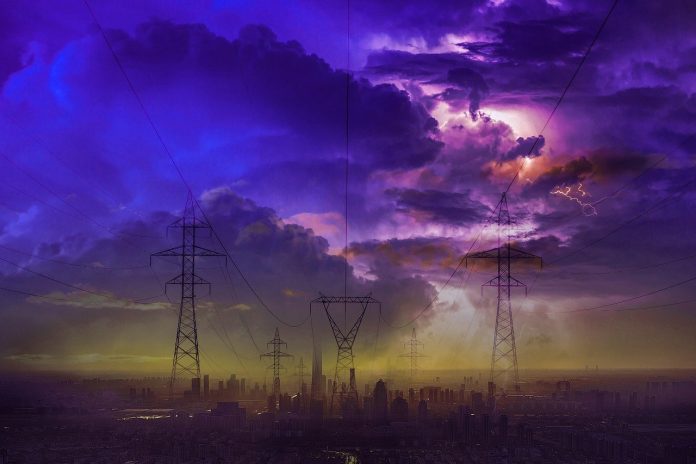A recent article in the Epoch Times, “EPA’s Power Grid Assumptions Are Disconnected From Reality,” identifies problems with the U.S. Environmental Protection Agency’s (EPA) mass-electrification plans that will increasingly compromise the U.S. power grid. These concerns are valid. The evidence suggests that the EPA’s and other agencies’ efforts to expand the use of electric power while shutting down power plants fueled by hydrocarbons will result increased grid instability, power shortages, and blackouts.
The author of article, Travis Fisher, senior research fellow in energy and environment at The Heritage Foundation, first explains that the grid in the United States is “already straining under excess regulations,” and that the EPA “has proposed two more rules that promise to cause even more major problems.”
The first proposal he references is EPA’s self-proclaimed “more ambitious” tailpipe emissions standard to reduce air pollution and carbon dioxide emissions. The proposed rule is, in effect, an electric vehicle mandate, virtually ensuring that 60 percent of new cars sold in 2030 are electric.
The second is a proposed rule to greatly restrict greenhouse gas emissions from fossil fuel power generating plants. Fisher writes that this rule will “force hundreds of power plants to shut down.”
When the cumulative impacts of both proposed rules are accounted for, the problem becomes obvious. Fisher points out that the increased burden on the grid from expanded electric car use, plus the shutdown of reliable power generation sources, will spell disaster for grid reliability.
The EPA avoids this conclusion by pretending each rule will exist in a vacuum, as opposed to the reality that rules will have cumulative impacts.
Fisher writes:
The EPA says neither rule will cause reliability problems or increase prices. One tactic the agency uses to reach these conclusions is to ignore its other rules (for example, to ignore the power plant rule when analyzing the effects of the tailpipe rule). According to the EPA, the increase in electricity demand from the EV mandate doesn’t conflict with the severe reduction in supply from the power plant rule; they simply assume the companion rules don’t exist.
The Clean Power Plan 2.0 makes it legally impossible to continue operating coal-fired power plants, which contribute about 20 percent of electricity generation and represent about 25 percent of the reliable capacity on the U.S. electric grid. The rule superficially offers three solutions—coal plant owners can use “green” hydrogen (hydrogen electrolyzed by renewables), capture nearly all carbon dioxide emissions, or shut down—but only the last option is truly viable.
The prediction that this policy push will result in grid instability is becoming more widely reported, both in media and by the grid operators and regulators themselves.
Just recently, for example, the largest electric grid operator PJM Interconnection LLC, which serves parts of the Midwest to the Northeast, released a report detailing the reliability risks that the so-called rapid energy transition would likely cause, due to “potential timing mismatch between resource retirements, load growth and the pace of new generation entry.” PJM notes that the retirements of traditional power sources like coal have been forced rapidly, but the construction of new generators are proceeding at a much slower pace than is needed to match historic and projected demand.
They point out that the “operating characteristics” of renewables, that they are intermittent and limited-duration, make it so that “we need multiple megawatts of these resources to replace 1 MW of thermal generation.”
Climate Realism previously reported on the threat to grid stability posed by these rules and others like them, combined with the inherent intermittency of renewables, here, here, and here, for example.
The Federal Energy Regulatory Commission (FERC) has also recently admitted that there could be “catastrophic consequences” for power grid stability if the Biden administration keeps up its breakneck pace of shutting down fossil fuel plants, without appropriate power generation sources to replace them.
The United States suffers from a grid that has not been well maintained in many parts of the country, from collapsing power lines in California to Maine’s electric system that is more than 50 years old in parts.
Amid all this, the Department of Energy has been rolling out one new regulation after another promoting increased electrification of homes, in part by discouraging the sale of new natural gas appliances like dryers, stoves, water heaters, and furnaces through regulations which limit those that can be sold to the most expensive models. These proposed rules, if they go into effect, will result in the use of millions of new electric appliances. This will add significant demand to an electric power grid that is already increasingly inadequate to supply current demand, especially during periods of peak demand.
The EPA, the DOE, and other executive agencies are seemingly uninterested in correctly analyzing the logical additive impacts of their policies: widespread blackouts that endanger human life. Fisher and the Epoch Times are to be applauded for accurately describing and sounding the alarm concerning the looming threat that federal agencies’ various proposed rules pose to grid stability.
















